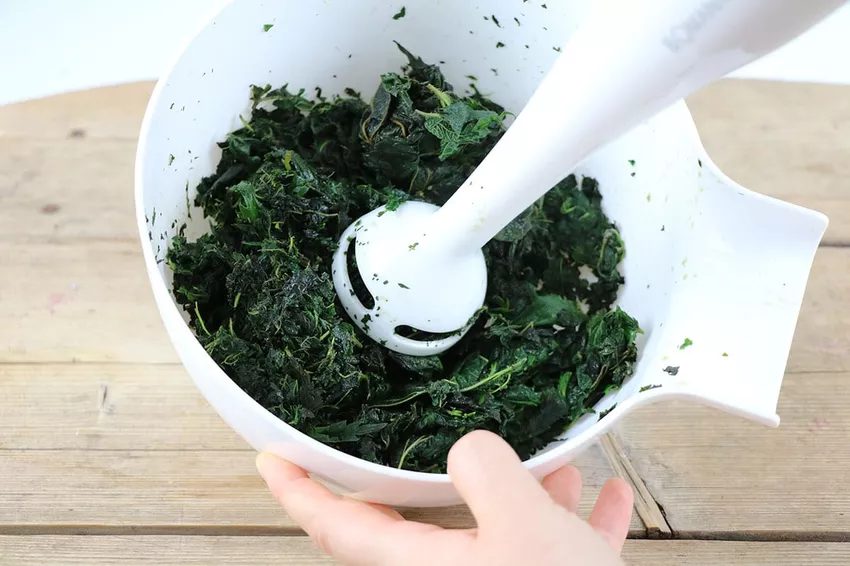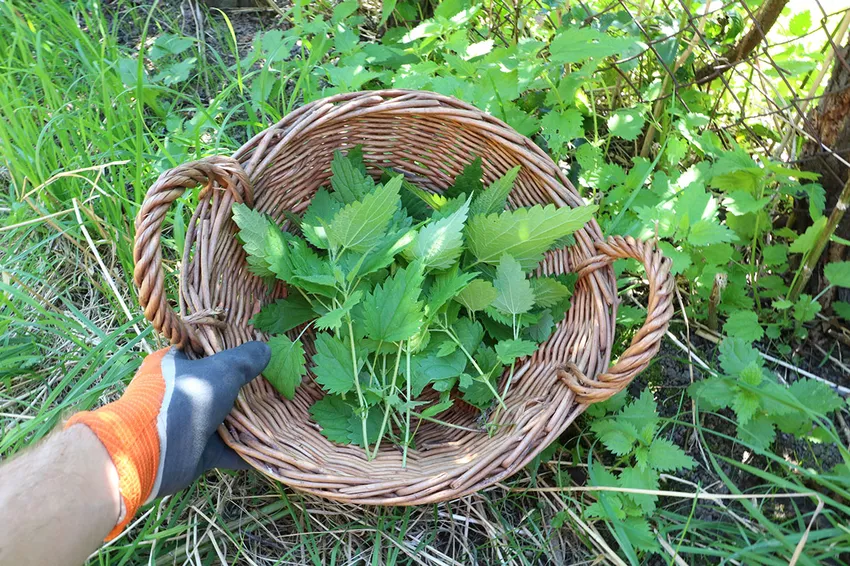- The stinging nettle (Urtica)
- Use of stinging nettles as food
- Use of nettles in medicine
- Use of nettles in the garden
- frequently asked Questions

The nettle is one of the most important medicinal plants. In the garden, it brings valuable insect food and helps to strengthen the plants. We have put together twelve ways to use nettles for you.
In a nutshell
- Nettle is one of the most important medicinal plants
- spread worldwide
- versatile uses in the garden
- Also used as food, dye plant and in natural cosmetics
- Stinging hairs contain nettle poison
The stinging nettle (Urtica)
Anyone who burns themselves on a stinging nettle while playing outside as a child will not have good memories of the plant. Its green, jagged leaves are covered with fine stinging hairs that contain nettle toxin. Contact with the skin is painful. A little later, red wheals form and itching occurs. We'll show you twelve ways to use nettles that prove the plant's positives outweigh the negative.
are widespread in Germany
- large nettle (Urtica dioica)
- small nettle (Urtica urens)
Rarely one encounters
- Reed nettle (Urtica kioviensis)
- Pill nettle (Urtica pilulifera)

Notice: The square stalk and the serrated leaves are the distinctive features of the stinging nettle.
Use of stinging nettles as food
In the past, stinging nettles were used to prepare food, especially in times of need. Today, the wild plant is making a comeback in the kitchen. It is considered an important source of protein and is popular with vegetarians and vegans. 100 grams of fresh nettle leaves contain about the same amount of protein as 100 grams of legumes. Use the tips of the nettles. The top leaves are fresh and tender.
1. Nettle Soup
Wash and chop 500g young nettle leaves. Peel and dice an onion and two potatoes. Then sauté the onion in butter. Then add the nettle leaves. Add a liter of water and the potatoes and simmer gently for 20 minutes. Blend the mixture, then season to taste.

2. Nettle spinach
To use the nettles as spinach, puree 500 grams of fresh leaves. Sauté a diced onion in the pan. Then add the crushed nettle leaves and season with salt and pepper.

3. Nettle seeds
Nettle seeds are excellent for refining muesli or yoghurt. You can also make protein powder from the dried seeds. From July to August you can harvest the nettles in the garden, dry the plants and thereby obtain nettle seeds.

Notice: It doesn't necessarily have to be chia seeds, goji berries or quinoa from distant countries. Peek into the garden or venture out into the woods, there you'll find native superfoods that rival their exotic counterparts. Nettle plants are rich in protein, iron and calcium. Nettles grow in abundance right on your doorstep and can be used quickly.
Use of nettles in medicine
The plant with the stinging hairs has a long tradition as a medicinal herb.
Your ingredients work
- antioxidant
- anti-inflammatory
- circulation-enhancing
- antispasmodic
- draining
- diuretic
4. Nettle leaf tea
Nettle leaf tea has a diuretic effect. This property especially helps people with bladder and kidney diseases, prostate problems or gout.
Manual: Drink a glass of nettle leaf tea regularly. To do this, pour half a liter of boiling water on three tablespoons of dried nettle herb.

5. Nettle Pads
Patches with cooled nettle tea can relieve skin problems and inflammation.
Manual: Dip cotton towels in cooled nettle tea and place them on the affected skin.
6. Nettle juice
During detoxification cures, a small glass of nettle juice is drunk daily for one to two weeks. Afterwards you should feel fresher and more efficient and spring tiredness disappears.
Manual: Harvest the young shoots and leaves. Put them in a herb press. Then dilute the extract with water.

7. Bath Additive
Used as a bath additive, nettle leaves can promote blood circulation and soothe sensitive skin. You can also buy ready-made stinging nettles as a bath additive and soap in drugstores.

Manual: Pour boiling water over the fresh herb and let it steep for a quarter of an hour. Then pour the mixture through a sieve and add to the bath water.
Use of nettles in the garden
Stinging nettles have long been established in the garden due to their wide range of uses. If you want to garden organically, you can't get past this all-rounder!
8. Natural fertilization and plant strengthening
In the garden, nettle manure can replace chemical fertilizers.
Manual: Put one kilogram of nettles in ten liters of rainwater. All parts of the plant must be completely covered with water. Then close the opening of the container with air-permeable jute or linen fabric.

The odor can be alleviated by adding rock flour. Stir the mixture once a day. After two weeks, when there are no more bubbles, the liquid manure is ready. Then remove the plant parts and dispose of them on the compost. Dilute the liquid manure with water in a ratio of 1:10 before use.
Nettle manure is suitable as a fertilizer for
- cauliflower
- cucumbers
- tomatoes
- potatoes
- pumpkin
- paprika
- flower
Did you knowthat different caterpillars feed exclusively on stinging nettle leaves? Butterfly caterpillars are often monophagous. That is, they feed on a single plant species.
9. Pest control
Unfermented nettle broth is used as a pesticide.
Manual: Put one kilogram of the top parts of the plant in five liters of water. Leave the mixture covered for a day. After that, remove the nettle parts and spray the pest-infested plants with it daily for two weeks.
Nettle broth helps against
- scale insects
- aphids
- spider mites

10. Jump start for young plants
Tomato lovers know that young plants need a "warm foot". With the use of stinging nettles you get a perfect jump-start. Other vegetables benefit from it too.
Manual: Dig the planting hole. Then cut up the nettle plants with scissors. Put two handfuls of nettle cuttings in the planting hole. Insert the young plant and then fill the hole with compost. Water the plant.
11. Mulch
Nettles contain a lot of valuable plant nutrients.

Manual: Place the nettle plants on the tree grates around the fruit trees. In this way, they protect against weed growth and release important nutrients to the roots.
12. Let tomatoes ripen
Green tomatoes can ripen in a dark box.
Manual: Add nettle shoots to speed up the process.
frequently asked Questions
Which parts of the nettle plant are used in naturopathy?Mainly the jagged leaves are used. Roots and seeds also contain numerous nutrients that are used in naturopathy.
While you should only choose the young leaves for consumption, you can use the entire plant in the garden.
Side effects are rare. People suffering from heart disease should avoid drinking the tea. It is possible that nettle tea can cause heartburn, a feeling of fullness and allergies in sensitive people. If you notice side effects, switch to other types of tea. Nature has many alternatives to offer.
Can nettles be eaten raw in a smoothie? What happens to the stinging hairs?Many people swear by a few young nettle leaves in their smoothies. To do this, only use the top four to five leaves on the tips of the nettles. Powerful smoothie makers are able to break up the leaves sufficiently, breaking up the plant fibers and stinging hairs.
When are nettles harvested in the garden?In the period from March to July, the weed can be harvested and processed for consumption. The valuable plants can be used all year round for fertilization and pest control.
How are the seeds obtained?Nettle seeds form from July to August. They can be used for propagation or to make protein powder. Cut the nettle stalks and hang them up to dry. Collect the seeds from the dried plants.